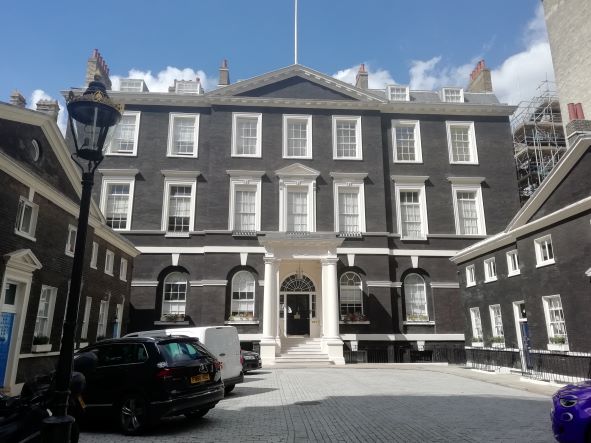
The answer to last weeks’ post is ‘Albany’, previously home to all those listed in the post such as Thomas Babington Macaulay (whose ghost is said to haunt the building), Edward Heath, Lord Byron, William Gladstone, Jacob Rees-Mogg and lots more.
You may well have walked along Piccadilly without noticing the Albany which sits back from the main road near the Royal Academy.
A previous property on the site was bought in 1771 by Penistone Lamb, Lord Melbourne, the father of the future prime minister, William Lamb, 2nd Viscount Melbourne. Well, I say ‘father’ but the paternity is questionable. His mother was Elizabeth Milbanke, Lady Melbourne, who had six children surviving beyond infancy, only one of whom, also called Penistone, appears to have been the child of Penistone Lamb senior. The future prime minister, William, along with two other children, was probably the son of Lord Egremont who is reputed to have actually bought Elizabeth Milbanke from her previous lover. A further child, George, was possibly the son of the future King George IV. Amazingly Elizabeth appears to have avoided scandal, believing in secrecy, discretion and saying nowt.
Melbourne demolished the orignal house on the site and built Melbourne House, a palatial three-story, mansion in the Georgian style. A large, sumptuous property was needed because Lady Melbourne possessed the required social skills and ambition to become one of the leading society hostesses of the age. Guests included Richard Brinsley Sheridan and Charles James Fox, and Elizabeth made sure she was also friendly with rival salon hostess, Georgiana, Duchess of Devonshire and her sister Henrietta. It was Henrietta’s daughter, Caroline, who later married the 2nd Viscount Melbourne and then had a famous affair with Lord Byron.
But all that was a bit later, after the Melbournes had exchanged their house with the Whitehall property of Frederick, Duke of York and Albany. This later became known as Dover House, now home to the Scottish Office. It appears the Melbournes’ financial dificulties may have prompted their agreement to the swap. The Duke of York and Albany was the brother of the future George IV and Melbourne House became known as ‘Albany’.
The Duke of York also proved incapable of managing his finances and in 1802 the mansion was sold to Alexander Copeland who hired architect Henry Holland to subdivide the mansion and convert the entire site into 69 different living ‘sets’. A co-ownership scheme was established, the sets being owned by wealthy bachelors, hence the long list of illustrious residents over the next 200 years. Women are now allowed to take on a ‘set’, one previous resident being the novelist, Georgette Heyer.
The origin of the term ‘set’ is unclear but possibly comes from the particular lifestyle of badgers. It seems to have been successful as Albany is said to be the longest continually occupied co-ownership scheme in the world.
When you’re next walking in Piccadilly be sure to take a minute to admire Albany and ponder the impressive list of past occupants.
True or false:
a) The Duke of York and Albany is the chap on the top of the column just off the Mall
b) The Duke of York and Albany is the subject of the well known rhyme, ‘The Grand Old Duke of York’
c) The Australian city of Melbourne is named after William Lamb, 2nd Viscount Melbourne.

All true